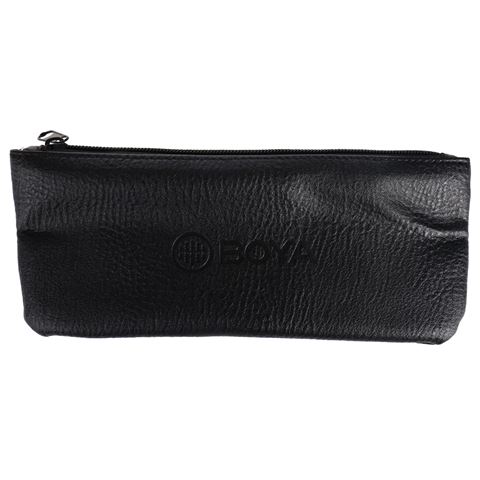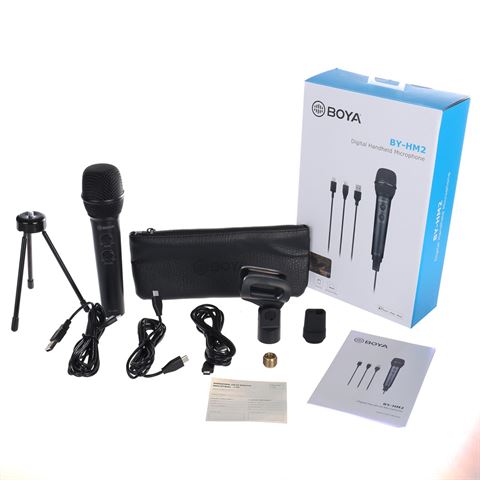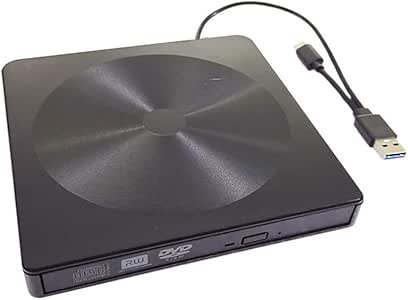Hornady's .17 Mach 2
By Chuck Hawks
The.17 HM2 (.17 Mach 2) cartridge, shown on the right, was developed to allow shooters some of the advantages of the successful.17 HMR (left) in a.22 LR sized action. The advantage of the shorter.17 HM2 can be readily seen here, as the little cartridges easily function in a standard Ruger 10/22 magazine. Since its introduction at the February 2004 Shot Show I have been patiently waiting for a.17 Hornady Mach 2 (.17 HM2) rifle that suits my exact and demanding needs. I have a wide variety of.17 (HMR) and.22 rimfire rifles and each has a specific purpose. Ruger's Mark III pistol chambered for the Hornady.17 Mach 2 (HM2) rimfire cartridge propels a 17-grain bullet at an average velocity of 1,800 fps.The Ruger KMKIII817 pistol features a stainless steel frame, 8-inch stainless steel fluted heavy barrel, checkered cocobolo thumbrest grips, a microadjustable rear sight and a Weaver-style scope-base adapter.

In February at the 2004 SHOT Show in Las Vegas I discovered that Hornady had done it again, introducing their second .17 caliber rimfire cartridge in two years. The new cartridge, named the .17 Mach 2, seemed to be everywhere in the SHOT Show, as Hornady partnered with some 15 other companies to assure the largest cartridge introduction in recent memory.
Marlin, one of Hornady's partners in the successful .17 HMR program, was prominent among these. Other well known gun makers to be offering .17 Mach 2 firearms include Anschutz, Browning, CZ, NEF, North American Arms, Remington, Ruger, Savage, Smith & Wesson, Taurus, Thompson/Center, and Winchester. Ammunition will initially be offered by Eley, Speer, Remington and, of course, Hornady.
The new .17 Mach 2 is based on the CCI Stinger version of the .22 LR case given a 20 degree shoulder and necked-down to accept the 17 grain .172 caliber V-Max bullet originally developed for the .17 HMR. The terminal performance of the plastic-tipped, boat-tail, V-Max bullet has already proven devastating on small game at .17 M2 impact velocities. While penetration is limited by its poor sectional density of only .084, how much penetration do you need to kill rabbits and squirrels? Just don't try to use the little bullet on larger animals; that's what the .22 WMR is for.
SAAMI specifications call for a case length of .714' and the same 1.0' cartridge overall length as the .22 Long Rifle cartridge, so the .17 M2 will function in existing .22 LR magazines and actions. Maximum average pressure is held to .22 LR levels, so pretty much any rifle or handgun chambered for the .22 LR could be adapted to the .17 Mach 2. Barrel bore and rifling specifications are identical to the .17 HMR, further simplifying production for gun manufacturers. Hornady has done everything possible to insure the market success of their new cartridge.
Factory Ballistics in a 24' rifle test barrel call for a muzzle velocity (MV) of 2100 fps and muzzle energy (ME) of 166 ft. lbs. (Dick Metcalf, in the May 2004 issue of Shooting Times magazine, reported a MV of 1640 fps from a 5.5' pistol barrel.) At 50 yards the figures are 1799 fps and 122 ft. lbs., and at 100 yards the little 17 grain bullet is still clocking 1530 fps and 88 ft. lbs. Beyond 100 yards the little plastic-tipped bullet is still moving right along, but due to its light weight the retained energy is not impressive. At 150 yards the velocity is still 1304 fps, but the remaining energy only 64 ft. lbs.
For comparison, an ordinary 40 grain .22 LR round-nose lead bullet is carrying 90 ft. lbs. of energy at 100 yards and 80 ft. lbs. at 150 yards. So, like the .22 LR, the .17 M2 has a practical hunting range of about 100 yards. The .22 LR is limited by its rainbow trajectory, while the .17 M2 is limited by its remaining energy.
The trajectory of the .17 M2 is quite a bit flatter than that of a High Velocity .22 LR bullet. Hornady's trajectory figures look like this: +0.7' at 50 yards, 0 at 100 yards, and -4.4' at 150 yards. This is a very useful trajectory for small game hunting, far better than that of the .22 LR, which has a 2.7' rise at 50 yards and 10.8' drop at 150 yards when zeroed at 100 yards. Practically speaking, a .22 LR rifle needs to be zeroed at about 75 yards to avoid over-shooting small animals like squirrels at intermediate distances, so the .17 M2 has about a 25 yard advantage in range over the .22 LR.
The .17 Mach 2 is actually very similar to the .22 Magnum (WMR) in trajectory out to 150 yards, but not in energy. The 40 grain .22 WMR bullet delivers 115 ft. lbs. of energy at 150 yards, compared to the 64 ft. lbs. of the .17 M2.
Nor is the .17 M2 comparable to the .17 HMR, as the .17 HMR shoots flatter and hits harder than its little brother. Using the same 100 yard zero, the .17 HMR's trajectory shows only 2.6' of bullet drop at 150 yards, and it retains 99 ft. lbs. of energy at that distance.
So, while the .17 M2 is not a magnum, as a small game hunting cartridge it is a practical step up from the .22 LR. It is also a step up in price, as a box of .17 Mach 2 ammunition is projected to retail for about the same price as a box of .22 WMR ammunition, in the neighborhood of $5.95 for 50 rounds. The reason for the relatively high price is the high manufacturing costs of the .17 V-Max bullet. But, it is a very accurate bullet!

Accuracy reports are encouraging. I have been told that groups from Marlin rifles are running about 1' (or 1 MOA) at 100 yards, which is better than can normally be expected from .22 LR or .22 WMR hunting ammunition.
The decision to acquire a .17 M2 rifle or pistol will require a careful cost benefit analysis. It will likely be more accurate than a .22 rifle or pistol shooting Long Rifle High Speed ammunition, and adds about 25 yards of effective small game hunting range. On the other hand, ammunition will cost about five times as much as a box of .22 LR High Speed cartridges, a very significant price difference, particularly for young shooters. I'd guess that the casual plinker or the shooter who spends most of his or her time at a 25 yard indoor range would be better served by the .22 LR cartridge. However, the serious small game or varmint hunter in search of something different may be attracted to the .17 Mach 2.
| .17 Hornady Mach 2 | ||||||||
|---|---|---|---|---|---|---|---|---|
| Type | Rimfire | |||||||
| Place of origin | United States | |||||||
| Production history | ||||||||
| Designer | Hornady | |||||||
| Designed | 2004 | |||||||
| Manufacturer | CCI/Hornady/Eley | |||||||
| Produced | 2004–Present | |||||||
| Specifications | ||||||||
| Parent case | .22 Long Rifle | |||||||
| Bullet diameter | .172 in (4.4 mm) | |||||||
| Neck diameter | .180 in (4.6 mm) | |||||||
| Shoulder diameter | .226 in (5.7 mm) | |||||||
| Base diameter | .226 in (5.7 mm) | |||||||
| Rim diameter | .275 in (7.0 mm) | |||||||
| Rim thickness | .043 in (1.1 mm) | |||||||
| Case length | .714 in (18.1 mm) | |||||||
| Overall length | 1.00 in (25 mm) | |||||||
| Primer type | Rimfire | |||||||
| Ballistic performance | ||||||||
| ||||||||
| Source(s): Hornady [1] | ||||||||
The .17 Hornady Mach 2, or .17 HM2, is a rimfirecartridge introduced in 2004 by the ammunition manufacturer Hornady, following the successful launch in 2002 of the .17 HMR. The .17 HM2 is based on the .22 Long Rifle 'Stinger' case, necked down to .17 caliber (4.5 mm) and using a bullet weighing less than half the weight of a typical .22 Long Rifle bullet.
Performance[edit]
The weight of the bullet is a key part of achieving the very high velocity for a rimfire round. It weighs only 17 grains (1.10 g) vs 30-40 grains (1.94-2.59 g) of a typical .22 LR bullet.[2] The .17 HM2 may or may not live up to its 'Mach 2' name, depending on geographic location and conditions, with velocities out of a rifle of 2,100 ft/s (640 m/s).[3] The velocity is nearly double that of a standard .22 LR, which results in a much flatter trajectory out to its 175-yard (160 m) effective range.[4]
Converting rifles[edit]
Since the .17 HM2 is based on the .22 LR, converting most bolt action firearms chambered in .22 LR to .17 HM2 requires only a barrel change. The higher pressure makes conversion of semi-automatic firearms more difficult, as virtually all are blowback designs that are sensitive to pressure changes. Conversion kits have appeared, and they replace the factory bolt or bolt handle with a heavier one to increase the bolt mass and compensate for the higher pressure.[4]
See also[edit]
References[edit]
- ^'17 Mach 2® 17 gr V-MAX® Varmint Express® Rimfire'. hornady.com. Archived from the original on August 8, 2018. Retrieved August 8, 2018.
- ^'.17 Mach 2 Ballistics'. Archived from the original on August 6, 2018. Retrieved August 6, 2018.
- ^Hawks, Chuck. 'Hornady's .17 Mach 2'. chuckhawks.com. Archived from the original on July 23, 2018. Retrieved August 8, 2018.
- ^ abSimpson, Layne (January 4, 2011). 'The Ultimate Flyweight Match: .17 HM2 Vs. .22 LR'. shootingtimes.com. Archived from the original on August 5, 2018. Retrieved August 5, 2018.
Further reading[edit]
| Wikimedia Commons has media related to .17 HM2. |
Hm2 For Macbook Pro
- Hawks, Chuck. 'Hornady's .17 Mach 2'. chuckhawks.com.
Hm2 For Mac Pro
External links[edit]
Hm2 For Macbook Air

